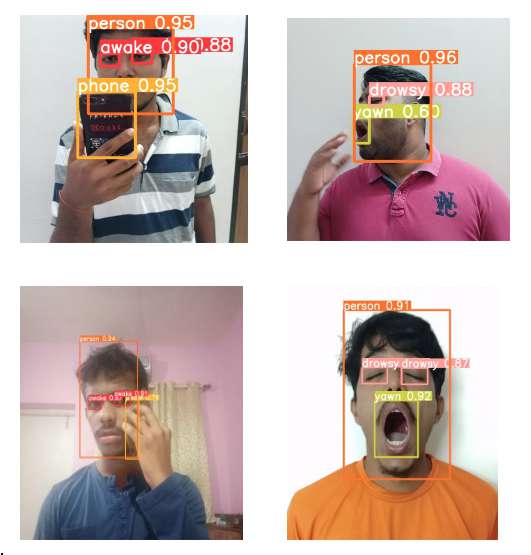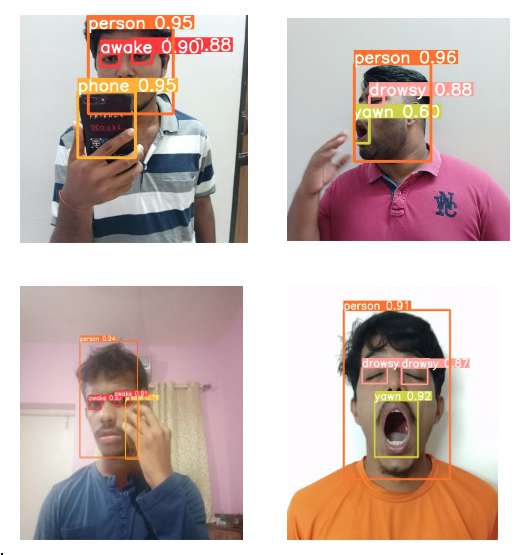Unique Registration Number: GSIC-436
Innovator Name:
- Vaibhav Digambar Giridhar
- Allan Sony
- Inacio Fernandes
- Bonifacio Gomes

Contact No: +919764294317
Project Objective:
- Detecting the face, the expressions of the vehicle driver.
- Based on the data, that is the data received from face recognition, decisions are to be made. Decisions include whether it is safe for the driver to continue driving, or to give a warning. After the final warning, there will be an emergency alarm alert so that the driver can halt and acknowledge.
- The driver unaware that he is slowly falling asleep will get notified of the final warning using an alarm.
- Blink rate, nodding of the head, phone usage and other distractions to be detected via the camera. The alarm/buzzer will accordingly alert the driver
Contact Email: giridharvaibhav04@gmail.com
Abstract:
Driver drowsiness has been one of the leading causes of car accidents in recent years, resulting in serious physical injuries, fatalities, and considerable financial losses. According to statistics, a reliable driver drowsiness detection system is needed to inform the driver before a disaster occurs. The following measures have been used by researchers to determine driver drowsiness through physiological and cognitive measures. A thorough examination of these measures will shed light on the current systems, their problems, and the improvements that must be made in order to create a reliable system. We went over the three methods employed and evaluated their benefits and drawbacks.
Drowsiness has been experimentally controlled in a variety of methods, which is also described. We have come to the conclusion that one could accurately identify a driver’s tiredness level by building a hybrid drowsiness detection system that combines non-intrusive physiological indicators with other metrics. If a warning is delivered to a driver who is deemed drowsy, a number of road accidents may be avoided. Aside from drowsiness detection, the technology will monitor other distractions such as phone usage and provide GPS location information after an accident for immediate support of authorities.
Our technique tries to first determine whether or not a driver is distracted, and if so, the system should be able to identify the sort of distraction. If their eyelids close for a certain period of time or if they yawn frequently, we’ll assume they’re starting to doze off and sound an alarm to wake them up. Other distractions, such as using a hand-held phone while driving and looking away from the road for long periods of time, will be recognized using AI/ML processing and notified when the danger threshold is exceeded
Project Outcome/result/findings:
Drowsiness, yawning and other distractions such as using phone while driving is detected.
Based on the detection, the system decides and sends an alert to the driver as a buzzer beep.
After a certain number of alert sounds, a long emergency alarm is given for the driver to
acknowledge and be cautious about his driving. A manual button is pressed to turn the alarm off.
Innovative Approach: (in 50 words)
In the future, this system may well be expanded to include security features such as allowing only certain individuals to use the vehicle which can be safeguarded information and updated for future users. In the event of theft, the vehicle will not start, and the burglar’s alarm may be communicated to the vehicle’s owner

